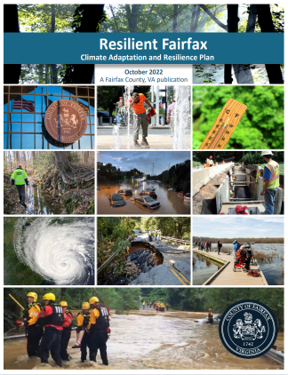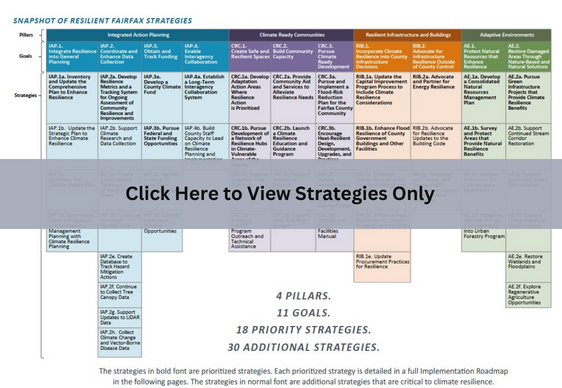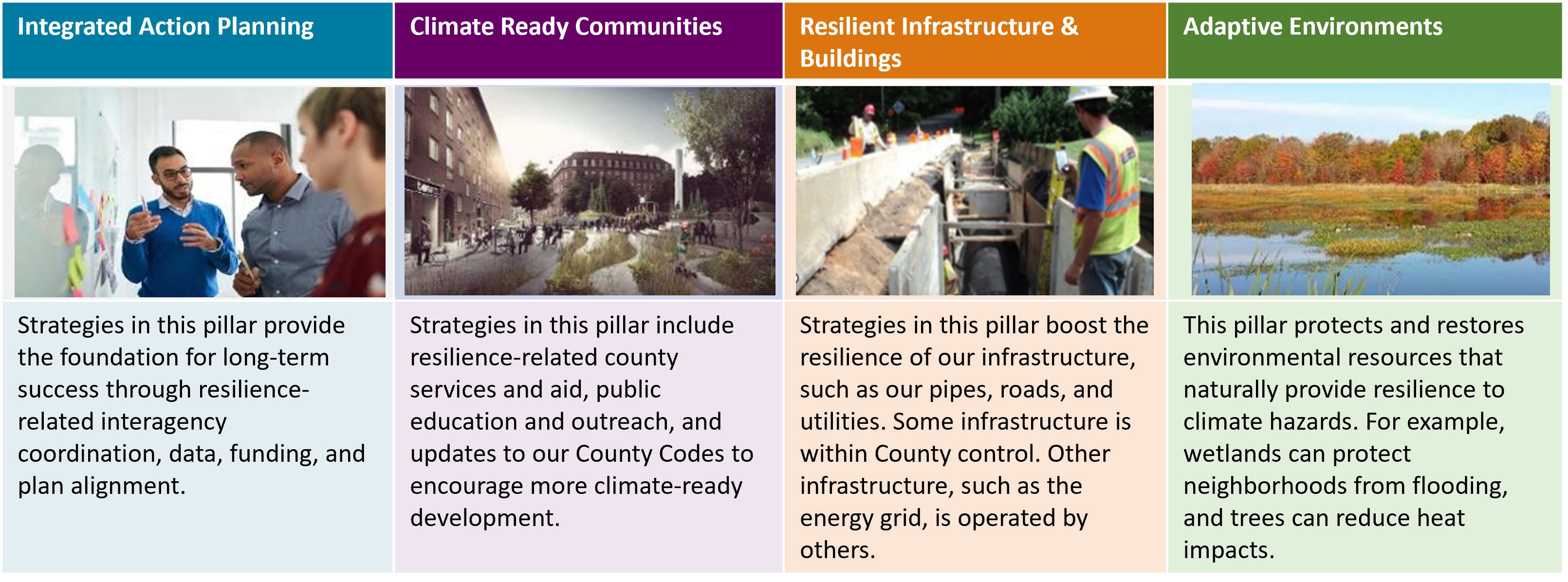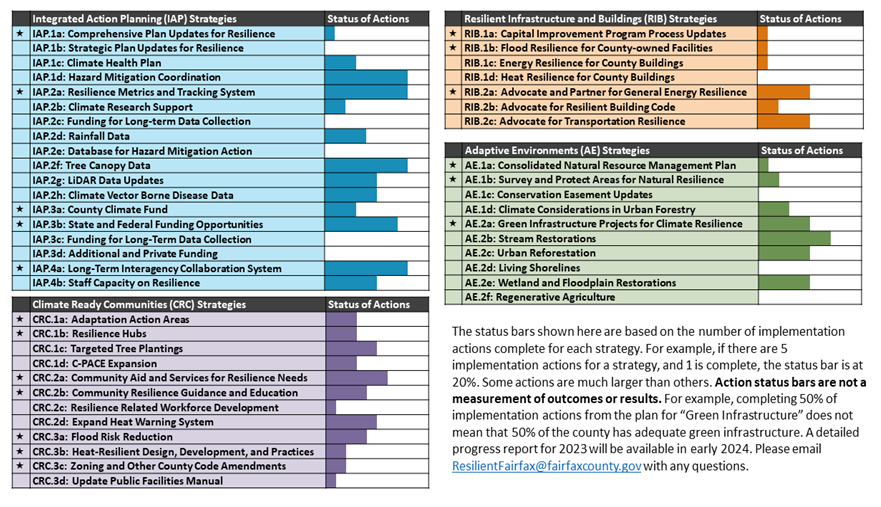All residents deserve an equitable opportunity to succeed. In alignment with the One Fairfax policy, Fairfax County is committed to intentionally consider equity when delivering policies, programs, and services. Equity is especially crucial to the topic of climate resilience; it serves as the foundation of Resilient Fairfax. Fairfax County’s approach to equitable climate resilience can be summarized in the following four steps:
1. Understanding Systemic Factors: There are historic and current systems, such as prejudiced housing policies and racial discrimination, that have led to inequitable development patterns, investment, and environmental burdens in Fairfax County. Understanding and acknowledging these factors enables staff to identify and address inequity.
2. Equity Analyses: Climate hazards often disproportionately harm certain populations, such as low-income, disabled, or elderly populations, communities of color, those experiencing homelessness, and outdoor workers, among others. During the Resilient Fairfax planning process, the team thoroughly analyzed impacts on vulnerable populations. Details can be found in the Vulnerability and Risk Assessment and the Interactive Climate Map Viewer. An example of how we mapped extreme heat burdens can be seen below.
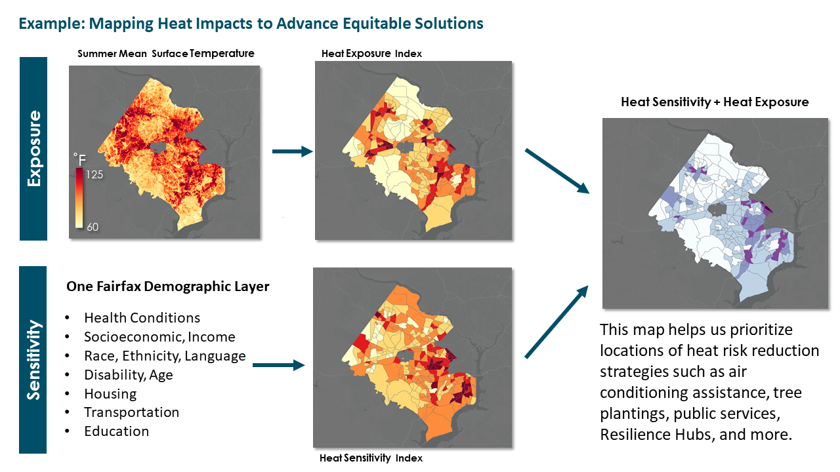
3. Equitable Engagement: It is critical to meaningfully engage residents who are usually left out of public processes. For Resilient Fairfax, residents, community representatives, advocacy organizations, and other members of the public have been involved throughout, in addition to dozens of government agencies, authorities, and commissions. The Resilient Fairfax planning process took place from February 2021 to October 2022. The planning process involved hundreds of stakeholders and over 200 engagement and coordination meetings. This engagement is continuing during the implementation phase.
Planning Timeline

Who is involved?
- County Interagency Team: There are over 25 Fairfax County departments and agencies involved in climate planning and implementation. See a full list of county entities involved in the Interagency Team.
- Community Advisory Group (CAG): The CAG is composed of residents from each of the county's nine magisterial districts, representatives for boards, authorities, and commissions, and individuals from the environmental, religious, nonprofit, civil rights, residential, and business communities. See a full list of entities involved in the CAG.
- Infrastructure Advisory Group (IAG): The IAG is composed of utilities, authorities, regional bodies, and representatives of local, state, and federal government agencies responsible for infrastructure management and services. See a full list of entities involved in the IAG.
- Fairfax County Residents: In addition to the Community Advisory Group, throughout the Resilient Fairfax planning process, members of the Fairfax County community contributed by attending public meetings, responding to a public survey, participating in the public comment period for the draft plan, and sharing thoughts and ideas with the project team throughout the process. Additionally, the Resilient Fairfax team has provided numerous presentations to neighborhood groups and community organizations. The Resilient Fairfax team values continued partnership with the public during plan implementation.
4. Equitable Implementation: Fairfax County strives to ensure that the benefits of projects are equitably distributed, burdens are mitigated, and intentions are met. Resilient Fairfax strategies prioritize underserved populations and equitable implementation. Strategies such as Adaptation Action Areas, Community Aid and Services, and Resilience Hubs help us connect those who are most burdened by flooding, extreme heat, and severe storms with the help they need. Each strategy in the Resilient Fairfax plan includes equitable implementation recommendations. Strategies can be found starting on page 39 of the Resilient Fairfax Plan. For metrics, including data on resilience and equity, please see the Climate Action Dashboard.



